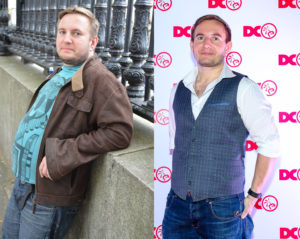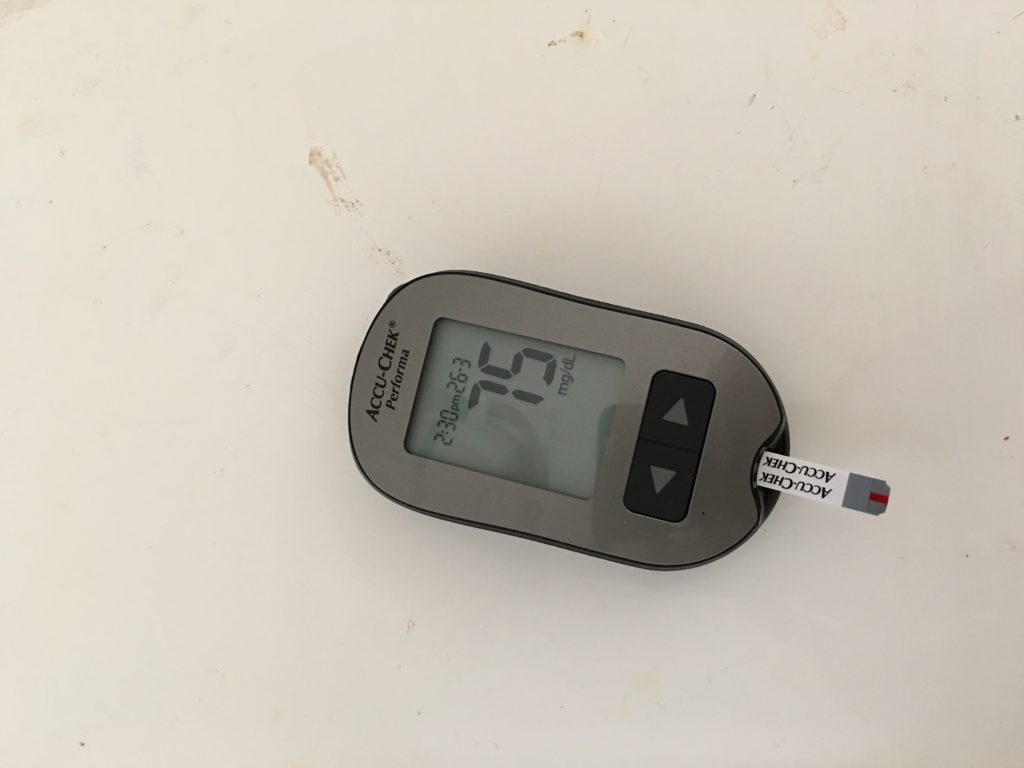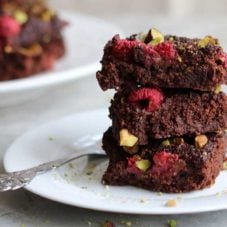If you’ve heard about the keto diet and want to know more, read on and I’ll tell you about it. But first, I’ll tell you a little about myself and how I came to eat a ketogenic diet and started fasting. When I experienced the benefits, I knew it was something I needed to share.
Table of Contents
How I Turned Keto

I’m Rus, co-founder of Intelligent Labs. I was in Phuket, Thailand and about 220 pounds (100kg) when I got diagnosed with type 2 diabetes and was put on daily insulin injections.
I knew I needed to find a solution to help me manage my symptoms and repair the metabolic damage I had done. I also wanted to start truly feeding myself the nutrition my body needed, so I started researching. That’s when I found keto.
The guiding principles of keto made complete sense to me. When we eat carbohydrates, our bodies absorb the glucose and send it into our bloodstream, which raises blood sugar. If we don’t eat much in the way of carbs, glucose won’t be available to drive up our blood sugar. This was science I could get behind!
I started Ketogenic eating and intermittent fasting (IF) and the weight started coming off. Now, I’m under 160 pounds (73kg), my blood sugar is completely normal and I’m off insulin. Essentially, I have successfully reversed my diabetes.
Regular exercise is also part of my regimen. It helps keep my symptoms at bay and makes me feel so full of energy. I like to exercise in the morning to mitigate the effects of the “morning high” that diabetics get when the liver dumps glucose into the bloodstream. Exercise forces that glucose out of my bloodstream and into my muscles for energy.
The other things I enjoy about exercise are the things I am accomplishing because of it. I was able to walk a marathon distance in beautiful Barcelona, Spain. I am also working on my human flag progression, and I do strength training with a goal of joining the 1,000-Pound Club.

I practice daily intermittent fasting and occasional all-day fasts. My IF ratio is 18:6 ratio, so I eat between noon and 6 p.m. This prevents snacking, keeps my glucose low and keeps my metabolism up. But one of the biggest benefits of IF is autophagy – cellular cleanup of old, damaged and unnecessary proteins. It keeps me youthful by keeping my cells in good working order and removing excess skin from when I was fat. Keto combined with fasting and exercise has healed me. It makes me feel so great that I have to share it with the world.
How Keto Works
Your body is designed to run on glucose or fat. It doesn’t freely do both at the same time. Since it won’t run on fat when plenty of glucose is always available, the goal of keto is to eat carbs at a low-enough level that the body is forced to run on fat.
In the absence of glucose, your body converts some fat into ketone bodies, which is called being in ketosis. Your body then uses fat and the ketones for energy. It also creates small amounts of glucose (when necessary) from fat and dietary protein for the liver, red blood cells and a small part of the brain and kidneys, which have to use glucose. When you create these conditions, it is very easy to burn off body fat while enjoying your food.
This is one diet where you don’t have to avoid flavorful but “fatty” foods like bacon, sausage, cheese and sour cream. That in itself helps make it a sustainable and enjoyable way to eat! As you eat this way, you will quickly become “fat adapted.” That means your body ramps up the enzyme populations that process fat and gets used to running on fat, which means your energy levels will be more constant. Once you are fat adapted, you stay that way – it would take a long time back on high-carb eating for that adaptation to reverse.
Health Benefits of Keto
I reversed my type 2 diabetes and lost weight – that’s two benefits right there, but there are so many more! Keto eating benefits so many systems throughout the entire body and can improve many different types of conditions or diseases.


These are my real, personal blood sugar readings whilst maintaining a state of ketosis, with no medication, just diet and exercise. For those who are already healthy, a ketogenic diet still has benefits. Most of the brain can run on either glucose or ketones, but running on ketones works much better. You can experience improved mental clarity and focus.
When you are fat adapted, the ready source of energy keeps you going. Endurance athletes notice that their endurance improves and they eventually no longer need a refeed during events. But if you aren’t all that healthy, there are even more benefits. Keto brings improvement to heart health, inflammation and neurologic health too.
Heart Health
While fat often gets the blame for heart disease, it’s actually a diet high in processed carbs and trans fat that is to blame. Study after study fails to show a link between dietary fat and heart disease – unless carbohydrate intake is high. Even saturated fat and dietary cholesterol have been exonerated.
There is a common condition called metabolic syndrome (MS). It is a collection of conditions that (when they occur together) increase your risk of diabetes, heart disease and stroke. The symptoms are excess fat in the torso, elevated blood pressure and blood sugar, and abnormal cholesterol and triglyceride levels.
Several studies have shown that a ketogenic diet reduces blood pressure, triglycerides and LDL (“bad”) cholesterol while increasing HDL (“good”) cholesterol. In other words, all the conditions that make up MS are removed. That is a great thing for your health and longevity!
Inflammation
A ketogenic diet also reduces inflammation because it helps block part of the process that causes it. BHB (one of the ketone bodies) seems to inhibit a driver of inflammation that is linked to obesity, insulin resistance, type 2 diabetes, Alzheimer’s disease and atherosclerosis (plaque buildup in blood vessels). That means that you could see relief from these and other inflammatory diseases and conditions, such as rheumatoid arthritis and autoimmune disorders.
Neurologic Health
Neurological conditions also are improved by the body’s use of ketones. Keto has been used to treat epilepsy for nearly 100 years because of its ability to help prevent seizures. It is also helpful for cognitive and memory problems.
In Alzheimer’s disease, Parkinson’s disease, other “aging-related” illnesses and epilepsy, the brain’s uptake of glucose is reduced before cognitive impairment appears. That means that the cognitive decline is a symptom of lack of energy.
When ketones are on the scene, the brain has an alternate fuel, and scientific evidence shows that a ketogenic diet can improve or remove symptoms in these conditions and in all stages of dementia. That’s practically a superpower in this day and age.
How to Eat for Ketosis
To create the right conditions for ketosis to start, your daily carbohydrate consumption needs to be quite low. It will take roughly a day to burn through your glycogen stores and kickstart the process of ketosis.
What is “quite low”? You need to consume less than 20 grams of net carbs (total carbs minus fiber). That will be about 5 percent of your daily calories. The rest will come from protein and fat (usually around 25 and 75 percent, respectively).
I know that 75 percent fat sounds high, but don’t worry. It doesn’t mean you are sitting there with a jar of bacon grease and a spoon. Fat has twice as many calories per gram as protein and carbs, so it skews the perspective, especially if you use a macro tracker and see a pie chart.
When carbohydrates are no longer a third of your diet, fat intake becomes a much larger percentage without actually increasing. And instead of being stored, the fat will be used for energy now.
In practice, this means you’ll usually eat a palm-sized portion of meat or a couple of eggs paired with a good serving of high-fiber vegetables. You can make the veggies flavorful and extra-satisfying with a pat of butter, sprinkle of cheese, or dollop of cream or Alfredo sauce.
The easiest way to avoid eating too many carbs is to completely avoid processed and “low-fat” foods. That’s because they often replace fat with starches, and starch is just glucose molecules strung together. Most foods fit fairly easily into two categories: eat or don’t.
Eat and drink:
- Eggs
- Meat and fish
- Full-fat cheese
- Leafy, flowering and fruiting vegetables
- Water
- Tea or coffee (no sweetener)
Don’t eat or drink:
- Sugar and sweeteners (including honey and syrup)
- Grains (rice, corn, wheat, oats, etc.)
- Grain products (bread, pasta, cookies, crackers, beer, etc.)
- Juice
- Soda
- Beer
For more specific information about what foods to eat, see our food list here. You’ll very quickly pick up on what works and what doesn’t. When you do, you’ll be enjoying bacon and losing weight while experiencing great energy and healing your body. That’s a combination anyone would go for.
💬 Something on your mind? Share your thoughts in the comments. We love hearing from curious minds.
📩 And while you’re here, join our newsletter for more smart stuff (and secret perks)!




